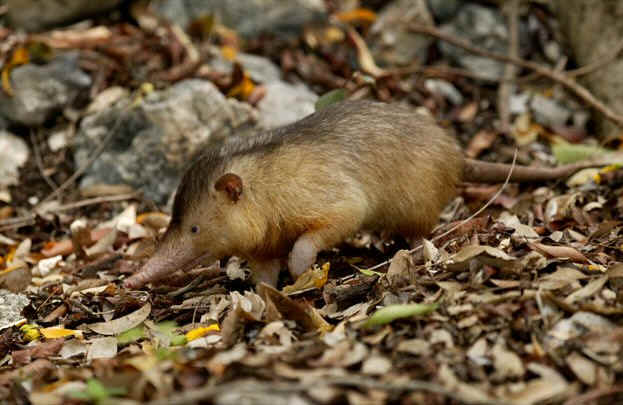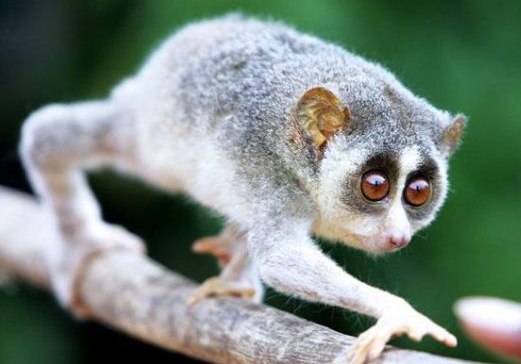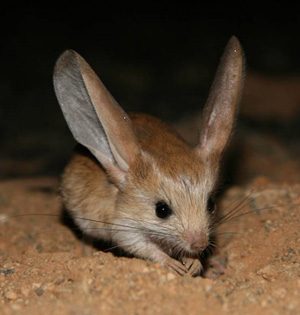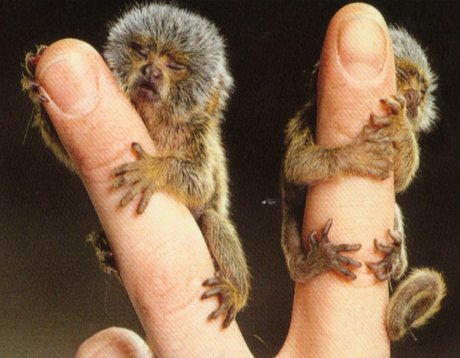There is a massive variety of life on this planet. Animals form only a portion of the biodiversity we see, and with that, only about 5% of species are vertebrates, animals with a backbone, which includes all fish, birds, reptiles, amphibians and mammals. Mammals aren’t even the biggest of those groups, in fact, a mere 8% of vertebrates have the chops to fall into that category. You’d think that with such a small fraction of life being mammalian, and our own fascination with our closest relatives, nothing in the class Mammalia could surprise us. Well, you’d probably be wrong. Just feast your eyes on these hair-producing, milk-drinking, three-middle-earbone having weirdoes.
1.
Star Nosed Mole

This strange little mole is found in North America and is known for the 11 pairs of fleshly appendages that extend out from their snout. These appendages aren’t for sniffin’ (they live underground like most moles), they are in fact touch organs and they have over 250,000 sensory receptors, which allows this mole to feel around in pitch black tunnels. This hamster sized mole likes to dig shallow trenches in order to find its food, but it also will swim in order to find chow at the bottom of streams and ponds. Another wicked adaptation is the unique ability of this little mole to smell underwater. It accomplishes this feat by exhaling bubbles in the direction of prey and then capturing the bubbles to analyze the scent.
2.
Pangolin

This is a very unique animal and one that you probably have not heard of. The Pangolin can be found in Africa and Southern Asia and it is unique because it is covered in overlapping keratin scales which act as a type of body armor. These animals are so unique and their armor so strong that a coat of armor was once made from Pangolin scales and presented to King George III. This animal may remind you of an anteater and that may be because like the anteater, the pangolin has no teeth, but instead uses a long tongue to collect ants and termites. There are a number of different types of Pangolins but they are still poorly understood.
3.
Hispaniolan solenodon

This solenodon is only found on the island of Hispaniola and it was first discovered in 1833. Despite the amount of time that people have known about this animal, sightings are still rare because the animals are nocturnal and they have extraordinary senses of sight, smell and hearing. They also have a limited impact on their ecosystem so detecting their presence can be difficult. The Hispaniolan Solenodon resembles a shrew and, remarkably for a mammal, has a poisonous bite. Strangely enough the animals are not immune to their own poison as they have been discovered to die if bitten by another solenodon, suggesting the toxin is a recent evolutionary adaptation. They are also truly savage fighters: a Hispaniolan solenodon in captivity is known to completely tear apart a chicken before eating it.
4.
The Slow Loris

This unique looking mammal is also poisonous like the Hispaniolan solenodon but strangely enough the poison is not in their bite. Rather, they secrete the poison from their elbows. They then lick this poison in order to prepare for a venomous bite or they will smear it over their children to discourage predators from eating them. These creatures eat eggs and snails, basically anything small that they can catch. These mammals are actually on the endangered species list because local traditional medicine prizes their large eyes.
5.
Tree Sloth

The sloth is an animal that many people have heard of but most people have no idea what they really look like. Sometimes looking at a sloth can make you feel like they closer to humans than apes because they certainly share plenty of our characteristics. They come in two-toed and three-toed varieties but both spend most of their time immobile, only eating food that is within reach, which might sound like some people you know. These animals spend more of their time hanging upside down in trees and they have in fact become so accustomed to this lifestyle that their fur actually grows in the opposite direction of most mammals. Though today’s sloths are only a few feet in length, they once had ground dwelling ancestors that would reach elephantine proportions. Even stranger the fact that the sloth barely moves means that it’s body becomes an ecosystem, where algae growing on its fur not only supplies nourishment but also a green camouflage, many other fungi, insects and microorganisms make their home on the sloth’s body, ensuring that it really blends in to the surroundings.
6.
Naked Mole Rat

Despite the fact that children may think that naked mole rats are cute and great pets due a popular cartoon, these creatures are actually less appealing than you might think. These creatures spend their entire lives underground. They have massively powerful jaws which account for nearly a quarter of their entire muscle mass. They are able to easily run backward and forward in order to easily navigate tunnels. Behaviorally, they are more similar to bees and termites than most other kinds of mammals. A mole rat colony will have a queen that gives birth to an entire worker caste that is completely infertile, while she is kept fertile with a harem of some of her own sons. These creatures have a very slow metabolism, a high oxygen intake and they have no sense of pain in their skin.
7.
Jerboa

This little rodent has ears that are larger than its entire head, it also had a pig-like snout and it resembles a miniature kangaroo. Unfortunately very little is known about the Jerboa because it is nocturnal and lives in a very harsh environment. Despite the inability to be able to study the animal it is already endangered because of environmental issues. They are desert rodents that are found in northern Africa and Asia. This animal does not drink at all but instead gets all the moisture it needs from the food it eats. That coupled with its ability to hop for very long distances allows it to survive in the harsh desert environment.
8.
Pygmy Marmoset

The Pygmy Marmoset is the smallest true monkey and it is one of the smallest primates. They grow to have a maximum length of 6.5 inches but that does not include the tail which can be up to 8 inches long. Both males and females typically weigh less than 5 ounces. This tiny monkey lives on fruits, leaves and even tiny insects. But the majority of its time is spent clawing through tree bark in order to reach the gummy sap inside, which gives it adequate nourishment. They communicate through a range of physical, vocal and chemical means, using a loud trilling noise to communicate over long distances and a shrill whistle to warn family members of danger. In the wild the pygmy marmoset can live up to 12 years but in captivity they can make it as old as 20. These are only some of the strange mammals which inhabit our world and many of them are in danger of being lost to us forever. It is always important to support conservation efforts and ensure that all animals on the planet get a fair shake. And maybe, with even more research and exploration, we will find animals even stranger than the ones mentioned here.
Written by Stephanie Schoppert – Copyrighted © www.weirdworm.net Image Sources
Image sources:
- – Star Nosed Mole: http://bp1.blogger.com/_qYa1pmpMDCc/RpWTLj6Y8sI/AAAAAAAAAKo/Hr8l_8fEuKM/s1600-h/weird_mole.jpg
- – Pangolin: http://s3.amazonaws.com/readers/2009/07/23/pangolinborneo_1.jpg
- – Hispaniolan solenodon: http://www.focusonnature.com/WestIn17.jpg
- – The Slow Loris : http://www.bogleech.com/nature/mammal-loris.jpg
- – Tree Sloth: http://www.bogleech.com/nature/mammal-sloth.jpg
- – Naked Mole Rat: http://www.bogleech.com/nature/mammal-molerat4.jpg
- – Jerboa: http://www.cosmosmagazine.com/files/imagecache/news/files/20071211_jerboa.jpg
- – Pygmy Marmoset: http://spaceandtime.files.wordpress.com/2006/05/marmoset.jpg







